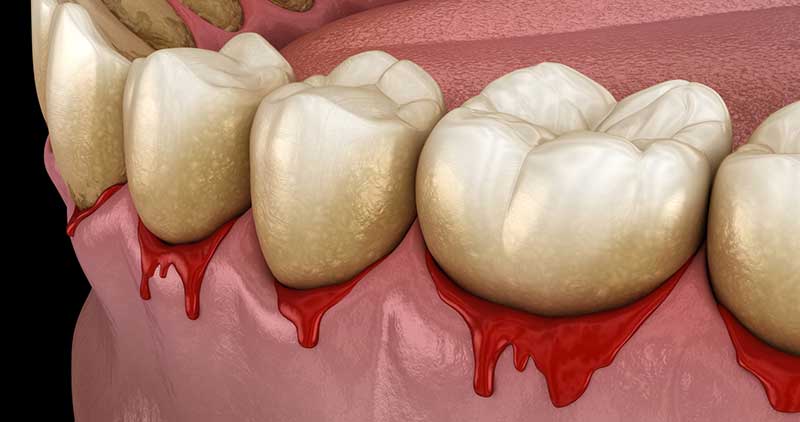
The two types of gum disease, gingivitis, and periodontitis, can sometimes be tricky to detect. Gingivitis is milder and presents as inflamed, irritated, or otherwise infected gums. If not recognized by you or diagnosed by your dentist, the infection can move into your bone, where it becomes periodontitis. Periodontitis can lead to serious illness and more severe disease if left untreated, so it is important for you to understand and know how to treat the symptoms of gum disease.
5 Common Gum Disease Symptoms
If you’ve ever noticed bleeding gums or blood on your toothbrush or in the sink after brushing your teeth, then you could have diseased gums. Here are a few other symptoms to look for that could indicate the presence of gum disease:
- Red and swollen gums – Red, swollen gums are commonly the first sign of gum disease. Inflamed gums might be painful and may bleed easily when you brush or floss your teeth.
- Bad breath – Bacteria in your mouth can release toxins that give you bad breath. Bad breath is typically a sign of more advanced gum disease like periodontitis rather than gingivitis.
- Receding gums – Gum disease can cause your gums to separate from your teeth and pull away from them. If your teeth look longer than usual, this may be a sign that your gums are receding.
- Teeth sensitivity – Receding gums cause your teeth to become more sensitive because, as your gums recede, they expose the dentin, which is the most sensitive part of your tooth.
- Wiggling or shifting teeth – Gum disease can cause your teeth to loosen or shift.
How to Treat Gum Disease
If you suspect you have gum disease, the first step is to see your dentist. Your dentist will then determine a treatment plan. Depending on the severity of your gum disease, your dentist may recommend one of the following treatment options:
- Deep cleaning – A deep cleaning will be the first step to treating gum disease. During a deep cleaning, your local dentist will use special instruments to clean below the gum line. Your dentist might also scale your teeth, which is when the tartar above and below your gum line is scraped off. Your dentist could also smooth the rough areas on your teeth roots to facilitate reattachment of the gum to the tooth.
- Medication – Your dentist might prescribe some medication to help treat your gum disease. These medications might be oral tablets you swallow or medication you apply directly to your gums.
- Surgery – If the above methods don’t work, your dentist may recommend surgery to fix the problem.
Leesburg’s Gum Disease Professional
Eddie Orobitg, D.M.D. has been serving the Leesburg community for over 20 years by providing quality dental health services. If you believe you are experiencing symptoms of gum disease, or need a routine dental checkup, rely on Dr. Orobitg for all of your dental needs. To schedule your appointment, call Dr. Orobitg’s office today at 352-787-5919.
